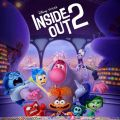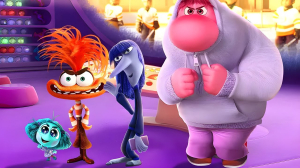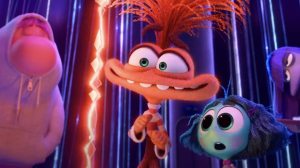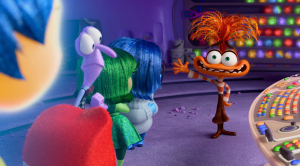
Inside Out 2: A Journey in the Depths of Adolescence When I first heard Pixar was releasing a sequel to "Inside Out," my expectations were high, yet cautious. The original film struck a deeply emotional chord through its clever examination of a young girl’s emotions, brought to life in such a novel way. So, when I secured my tick...



Inside Out 2
Inside Out 2: A Journey in the Depths of Adolescence
When I first heard Pixar was releasing a sequel to "Inside Out," my expectations were high, yet cautious. The original film struck a deeply emotional chord through its clever examination of a young girl’s emotions, brought to life in such a novel way. So, when I secured my ticket for Kelsey Mann’s directorial debut, "Inside Out 2," I braced myself for either a triumphant return or a letdown. Luckily, what unfolded was an impressive yet familiar exploration of individuality and growth.
Revisiting Riley
The film begins with Riley, now a young teenager at 13, navigating the choppy waters of adolescence. Her principal emotion, Joy, believes she has finally fine-tuned the perfect system to manage Riley's psyche. With a team that includes Sadness, Fear, Disgust, and Anger, Joy orchestrates the intricate dance of emotional balance, relegating Riley’s worst memories to the "back of the mind" and storing the best moments in a shimmering underground lake that forms Riley's core beliefs.
This introduction was not only a fitting nod to fans of the original but also a refreshing re-entrance into Riley's evolving world. It sets the stage for remembering the characterization that made the first movie so compelling, yet it hints at the new challenges that lie ahead.
The Emotional Ensemble
A compelling aspect of "Inside Out 2" is its expanded emotional cast. Enter Anxiety, Ennui, Embarrassment, and Envy — emotions that resonate deeply with the teenage experience. Anxiety, portrayed by Maya Hawke, takes a prominent role, attempting to reshape Riley into a version that gains her idol Val Ortiz's approval. Anxiety’s machinations reminded me how destabilizing insecurities can be at that age, demanding attention and action in ways that often lead away from one’s true self.
The inclusion of these new emotions enriches the story, providing fresh perspectives on Riley's internal conflicts. For instance, Embarrassment’s light-emo persona, brought to life by Paul Walter Hauser, offers comic relief but also resonates with anyone who’s ever been mortified by the smallest gaffes during their teenage years.
A Visual Extravaganza
Pixar doesn't disappoint when it comes to creating a visually captivating experience. The animation in "Inside Out 2" is a feast for the eyes, with the imaginary landscapes of Riley’s mind painted in vibrant and fluid hues. The underground lake storing Riley’s happy memories is particularly mesmerizing, with glowing tendrils that reach toward the sky, imbuing each scene with a spiritual kind of beauty.
Even the 'back of the mind' realm, where less favorable memories are cast away, is designed thoughtfully, creating a stark but intriguing contrast to the more vividly colored emotional centers.
Story Arc and Structure
The narrative of "Inside Out 2" is straightforward yet affecting. Riley's realization that her best friends will attend a different high school spirals her into a whirl of emotional chaos, exacerbated by Anxiety’s interference. Joy and the other emotions must journey to the 'back of the mind' to retrieve Riley’s discarded sense of self, essentially embarking on a quest to restore balance.
This arc may seem predictable at times, yet it provides ample ground for exploring the significance of each emotion’s role. The animation's pacing keeps the audience engaged, balancing light-hearted sequences with more intense, emotionally charged moments.
Thematic Depth
The movie doesn’t shy away from a deep dive into the themes of belonging, identity, and the pressures of conformity during teenage years. Riley’s transformation into a reflection of Val—neglecting her unique qualities and her best friends—perfectly encapsulates the struggle many teens face in trying to fit in while navigating peer influences.
Seeing Riley go through this transformation underscores the universal message: true personhood cannot be manufactured to meet another’s standards. As Joy and Anxiety grapple with this realization, it provides a poignant commentary on the importance of self-acceptance and staying true to one’s roots.
Humor and Heart
What makes "Inside Out 2" truly delightful is its humor, seamlessly woven into the fabric of its storytelling. The comedic elements—ranging from a "Blue’s Clues"-inspired nightmare character to an Orwellian parody in Imagination Land—add a layer of levity that balances the film’s weightier themes.
Despite the introduction of new, less memorable emotions, the primary characters from the original film continue to charm. Joy, Sadness, Anger, Fear, and Disgust maintain their dynamic synergy, their interactions filled with both humorous and heartfelt moments. Yet, no character emerges with the same emotional resonance as Bing Bong, whose absence is felt deeply among fans.
Critique and Reflection
While "Inside Out 2" excels in many areas, it is not without its shortcomings. One critique is its handling of Riley's friends of color, Grace and Bree. These characters predominantly serve as props in Riley's narrative, their own stories and emotions sidelined to highlight Riley’s journey—a trope that often recurs in films centered around a white protagonist.
Additionally, Anxiety and Joy share surprisingly few scenes, missing an opportunity for rich, dynamic interplay that could have added another layer of depth and tension to the narrative. The film leans heavily on humor to bridge these gaps, which, while effective, occasionally undercuts its emotional impact.
Overall Experience
Despite these hiccups, "Inside Out 2" remains an immersive, emotionally resonant film. Watching Riley glide across the ice, freed from the pressure to impress or outperform, symbolizes a return to one’s pure love for an activity—an encouragement that resonates with both teens and adults. This scene masterfully captures the essence of Joy, offering a beautiful visual representation of inner peace and happiness.
The film’s conclusion brings Riley’s emotional journey full circle, reaffirming the importance of embracing every part of oneself, even the parts that seem inconvenient or embarrassing. It’s a timely reminder that internal harmony is a dynamic process, requiring acceptance and balance of all our emotions.
Final Thoughts
"Inside Out 2" stands as a testament to Pixar's ability to blend imaginative storytelling with profound emotional depth. While it may tread familiar ground, its exploration of the turbulent teenage years is both insightful and visually spectacular. The film’s message—that being true to oneself brings unparalleled joy—resonates long after the credits roll.
For those who resonated with the first film, "Inside Out 2" is a welcome continuation of Riley’s story, offering both new and nostalgic elements to enjoy. It’s a heartwarming reminder that even amidst life’s emotional complexities, there is beauty in the journey of growing up.


